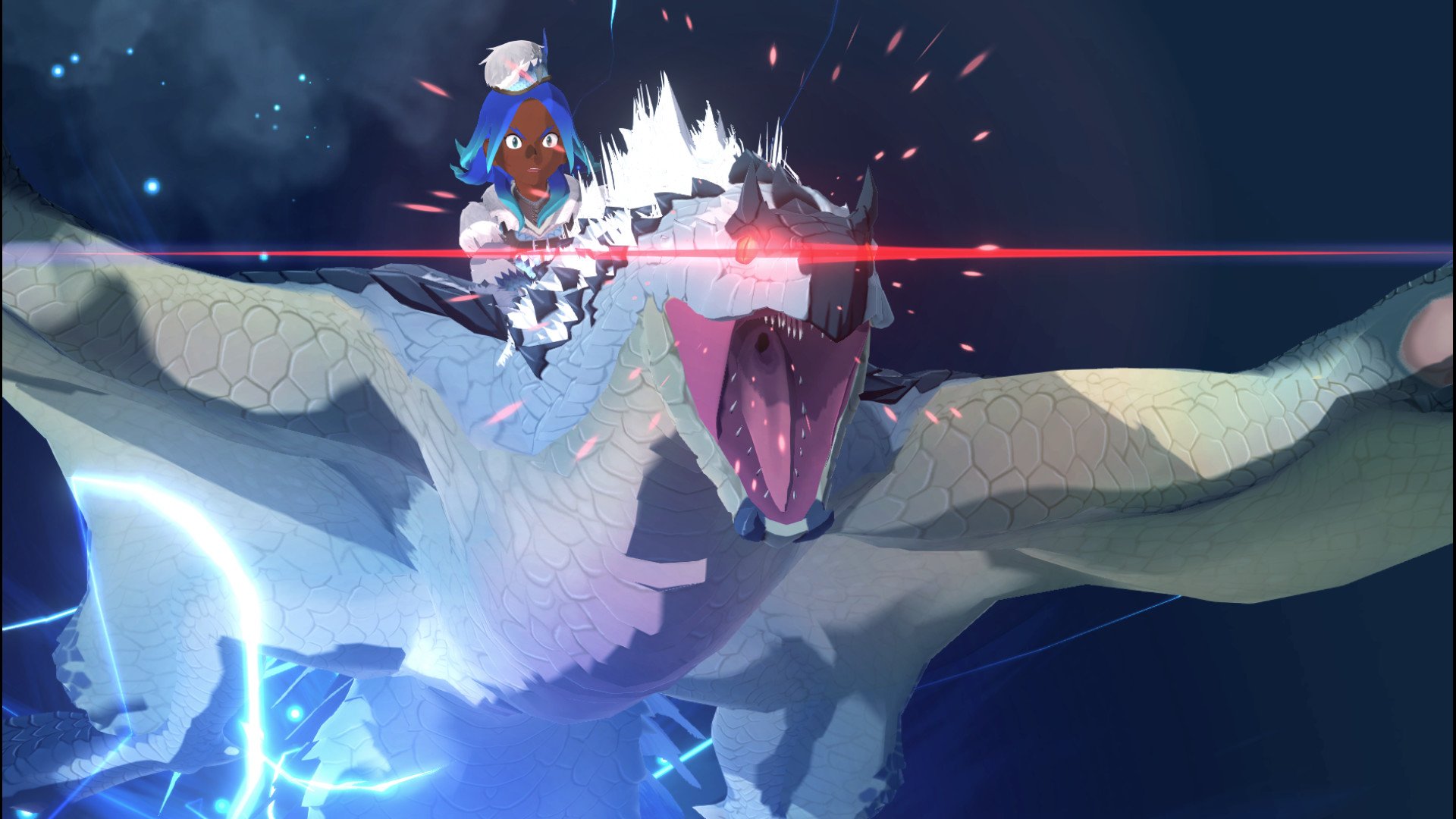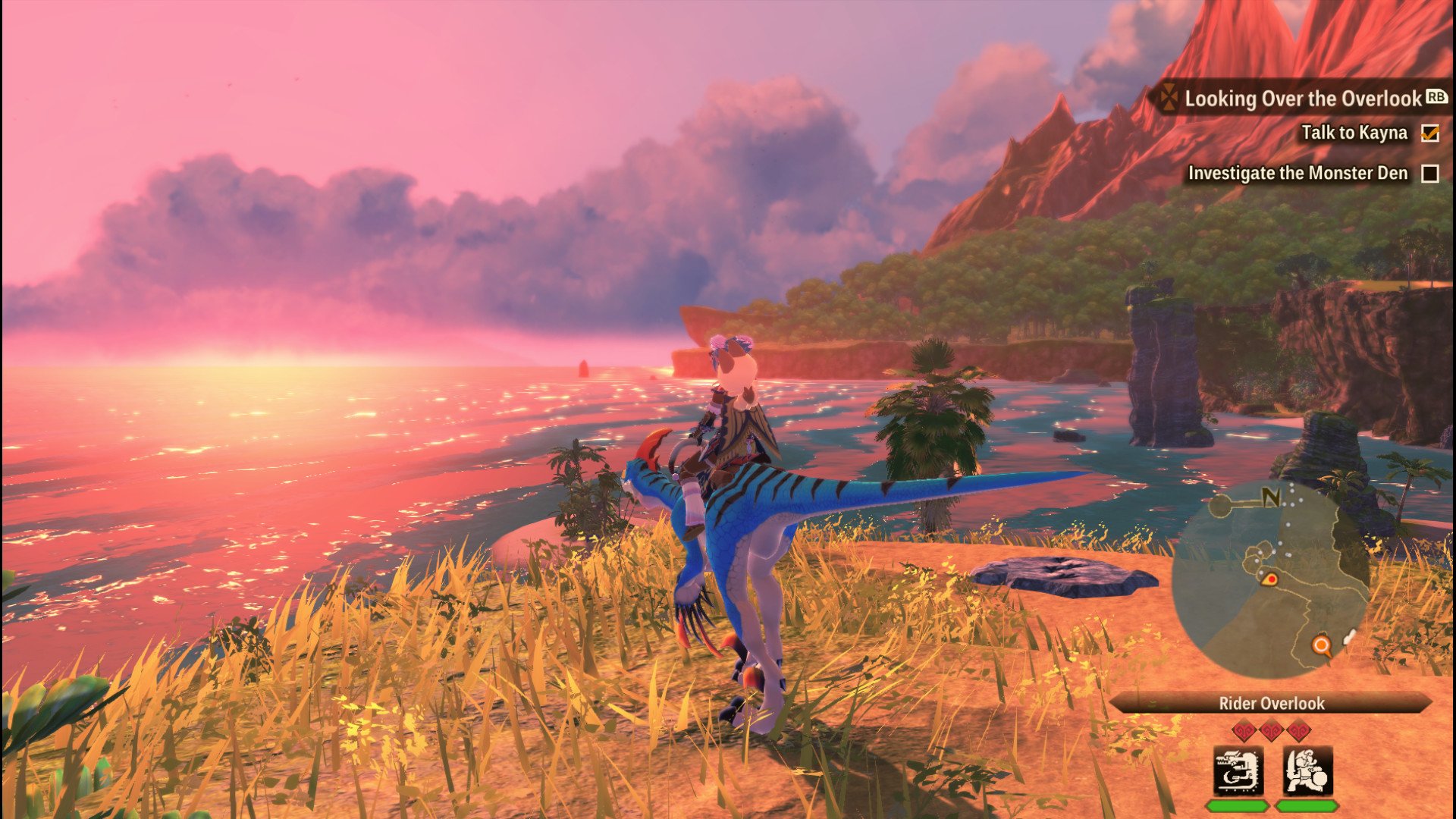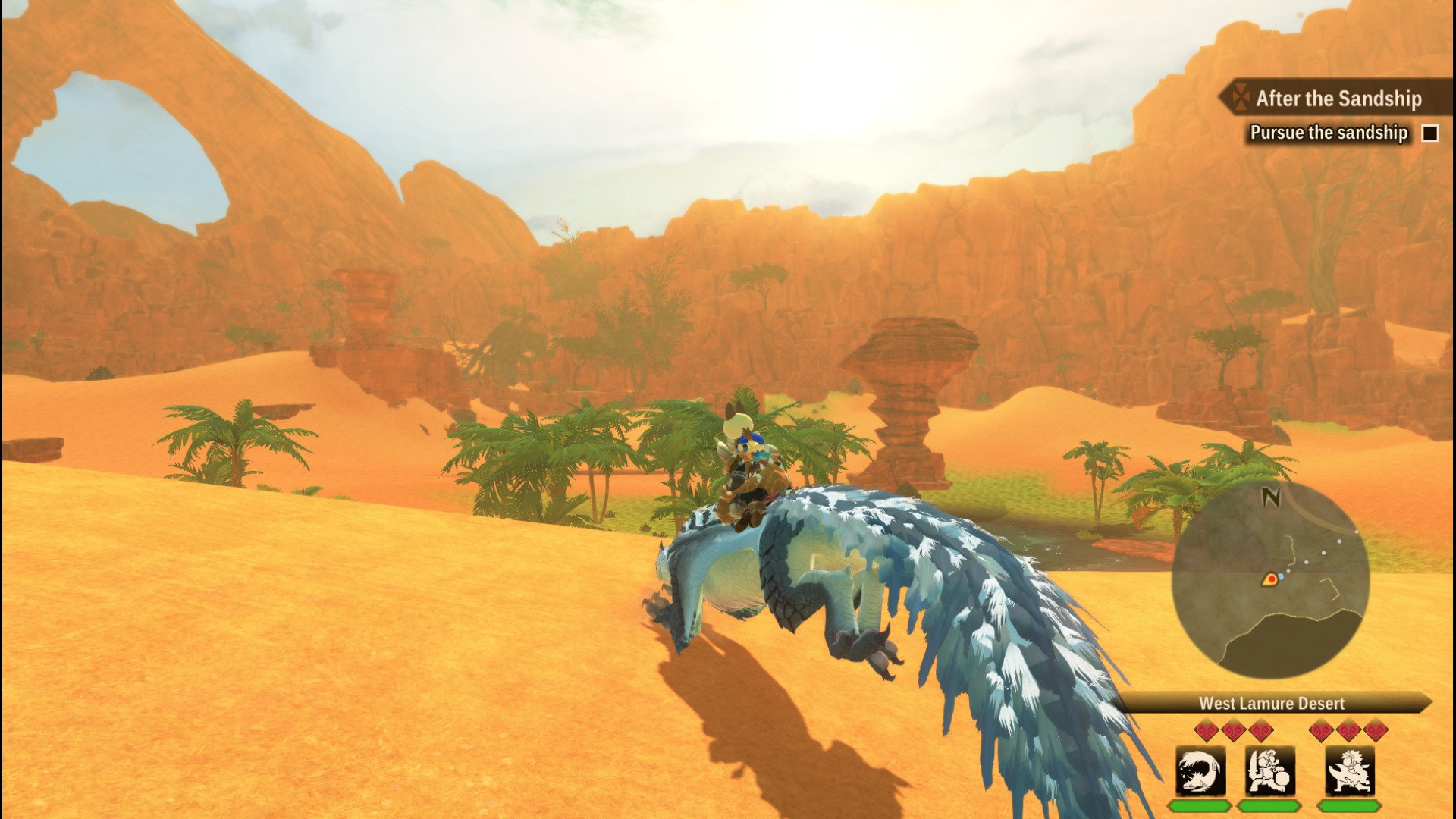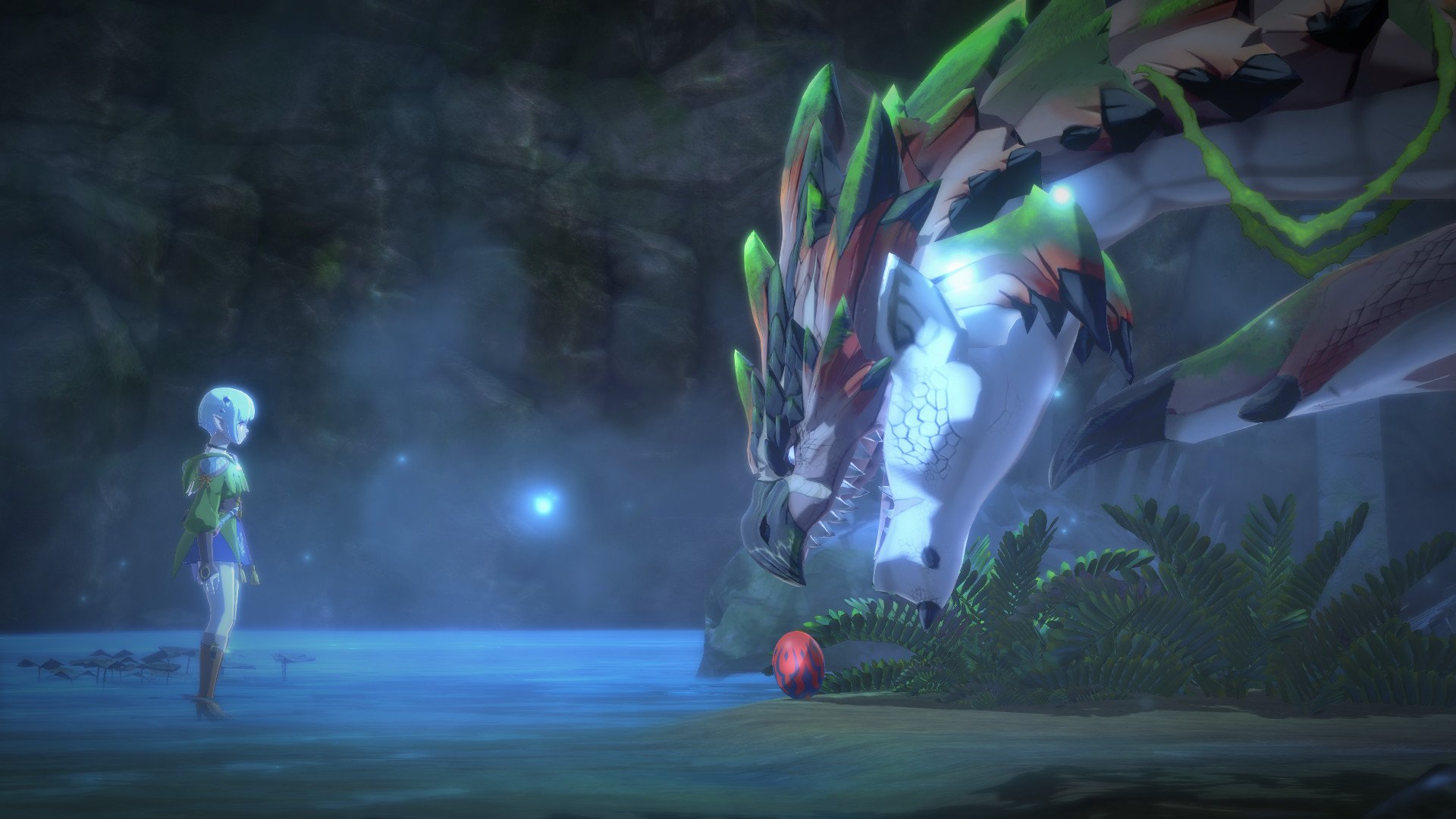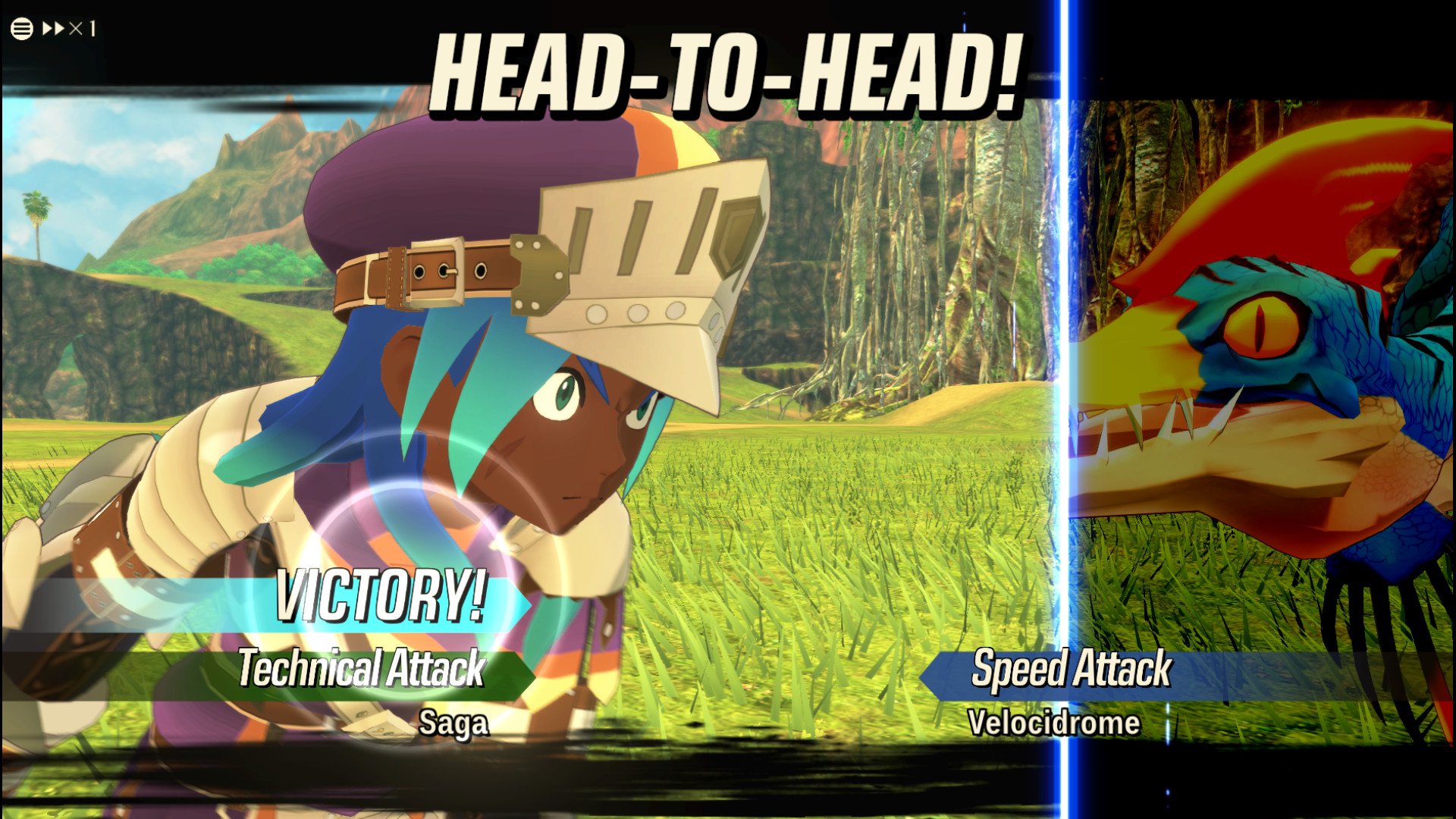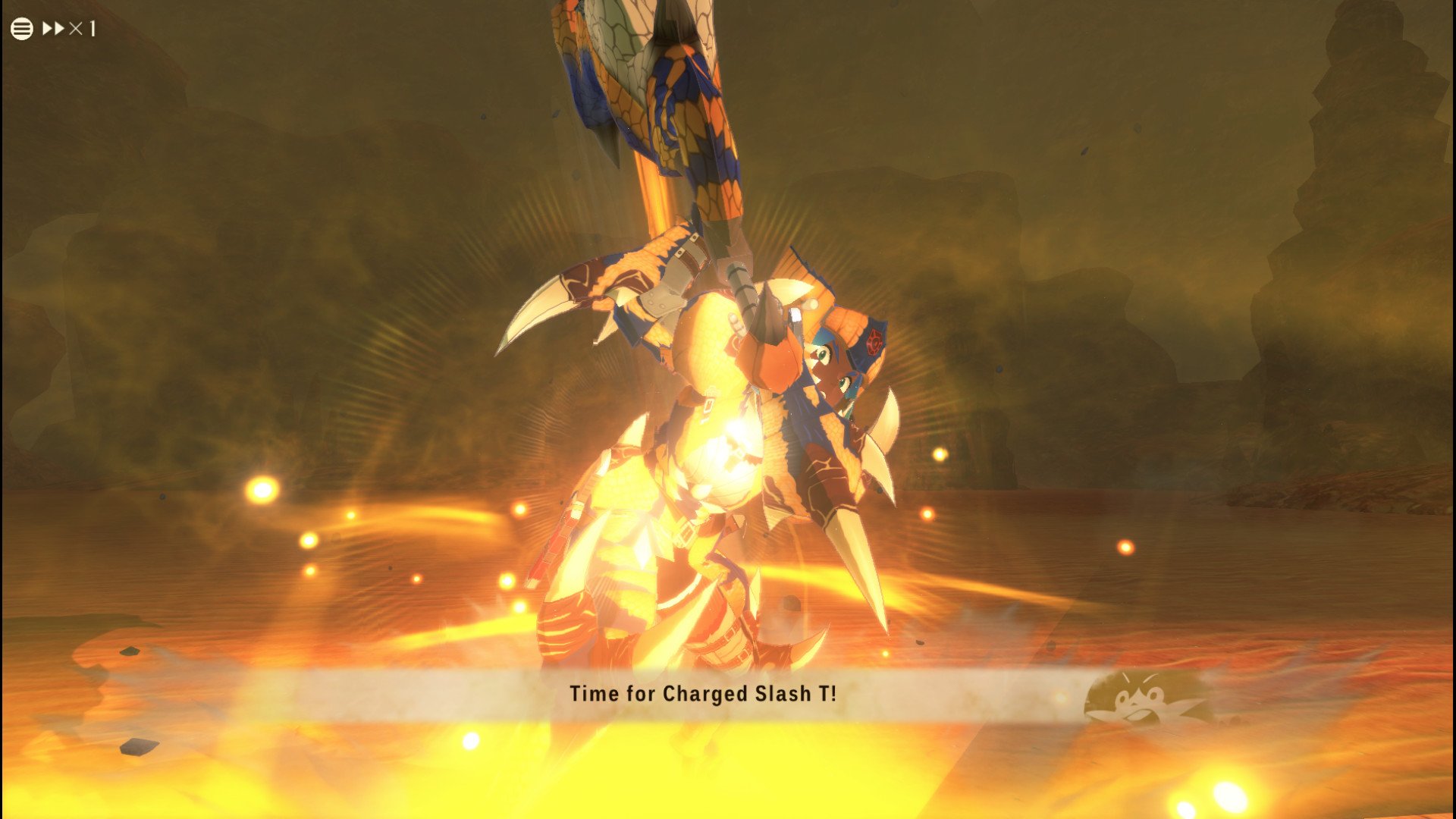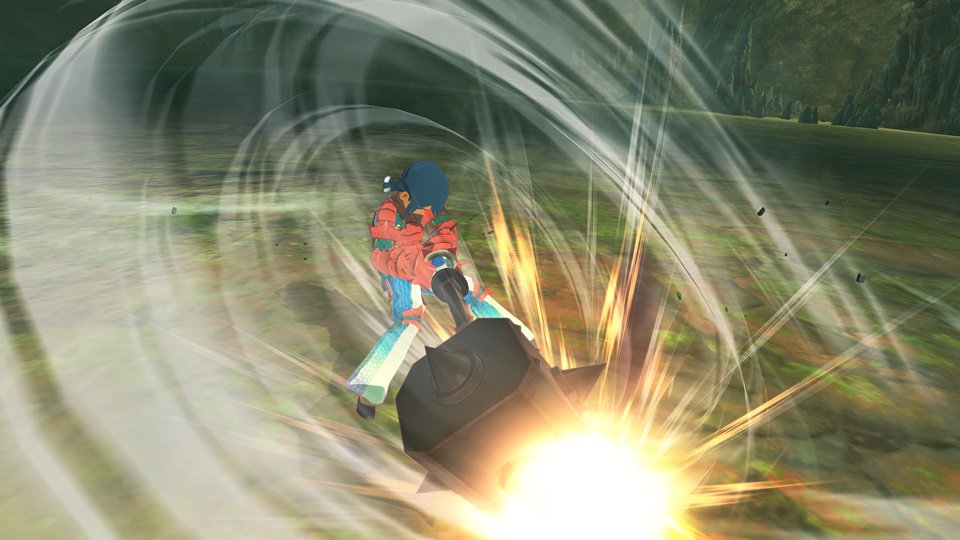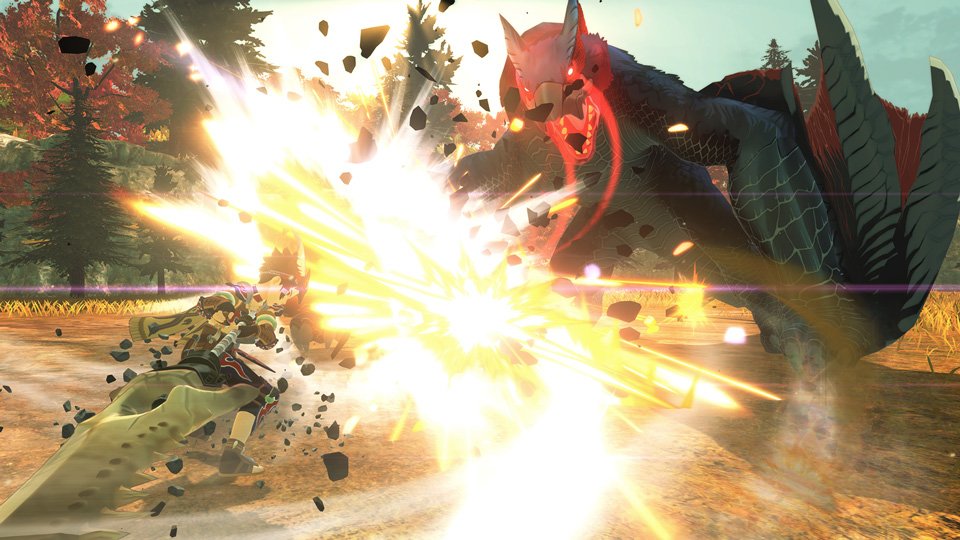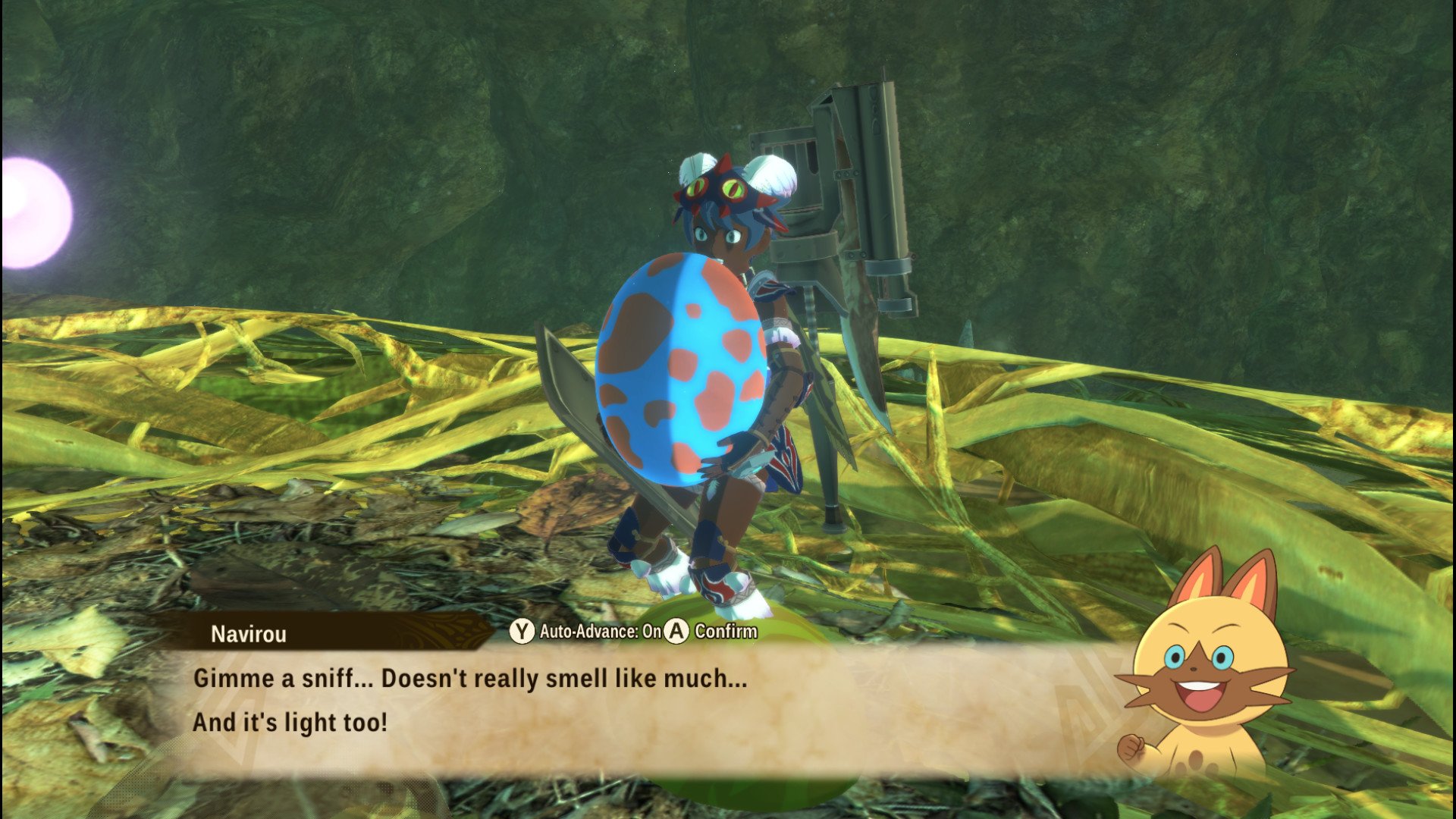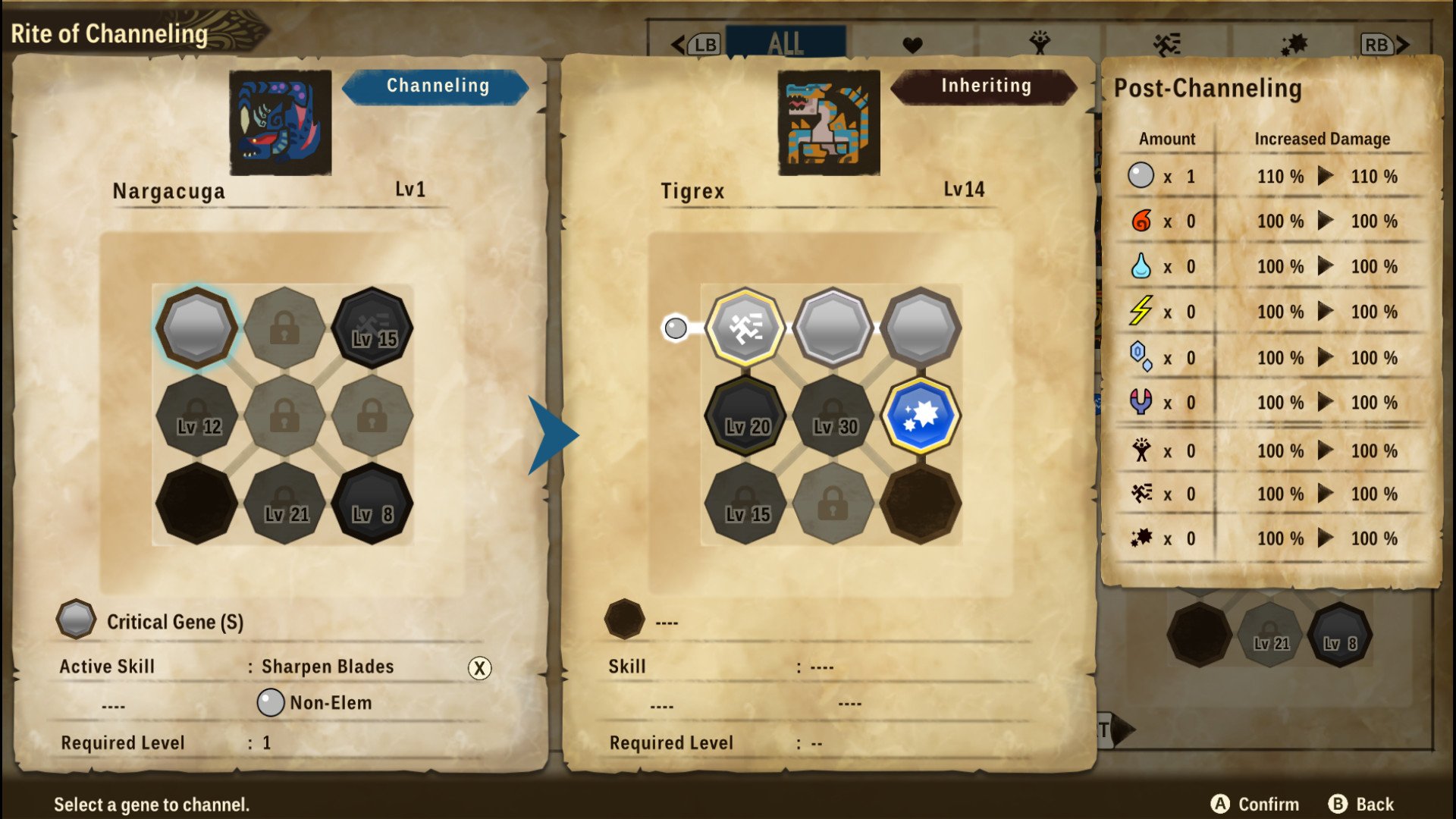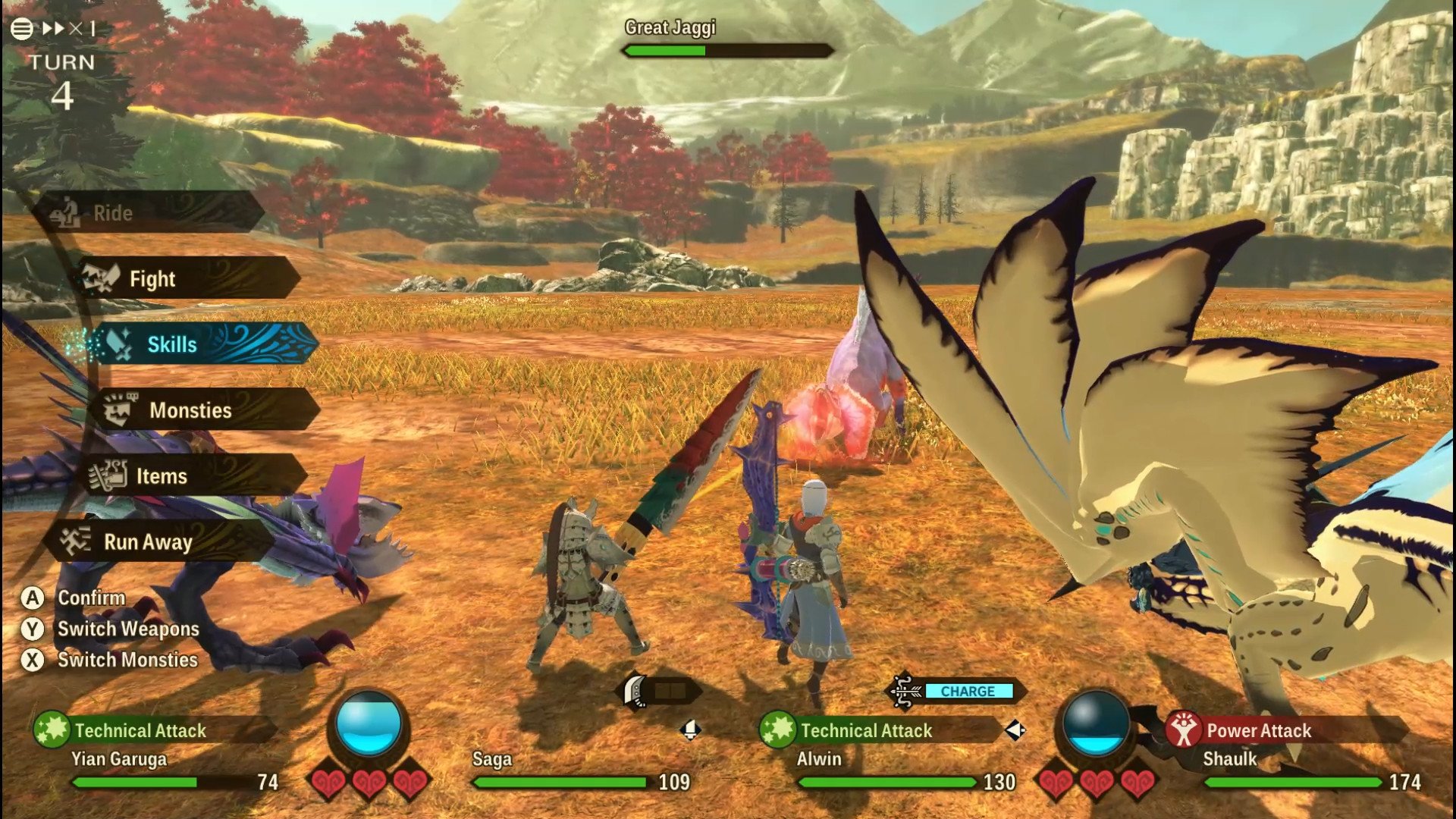
In 2016, Capcom released an unexpected spin-off title in its long-running Monster Hunter franchise called Monster Hunter Stories. It was a JRPG that merged the monster-collecting JRPG sub-genre with the action-hunting gameplay of Monster Hunter. Monster Hunter Stories was a unique and underrated take on the Monster Hunter series, and many fans had wished for a sequel that expanded on the concept.
Fast forward five years, and Capcom is finally releasing the long-awaited sequel, Monster Hunter Stories 2: Wings of Ruin. When the company announced the game in September 2020, I could barely contain my excitement since I am a huge fan of the first game and Monster Hunter in general. After my time, I am more than happy to report that not only does Monster Hunter Stories 2: Wings of Ruin live up to the original title, but it has surpassed it. I would even go as far as to say that it's one of the best RPGs on PC.
But how exactly did this game live up to my expectations? Well, let's get ready to mount our Monsties and ride on to find out.

Bottom line: Monster Hunter Stories 2 is a fun, anime-inspired ride that gets better the further you delve in. It has a huge roster of Monsties to tame, a simple to learn but difficult to master combat system, and an insanely addictive Monstie development system.
Pros
- Tons of quality-of-life improvements
- Fun standalone story
- Gigantic roster of monsters to recruit
- Improved combat system
- In-depth and addictive Monstie development system
Cons
- No Monster Hunter language in the audio menu
- Plot can be fairly predictable at times
- Wished I could directly control the Battle Buddies
- Lack of music while exploring open areas and dungeons
Monster Hunter Stories 2: Wings of Ruin: Presentation
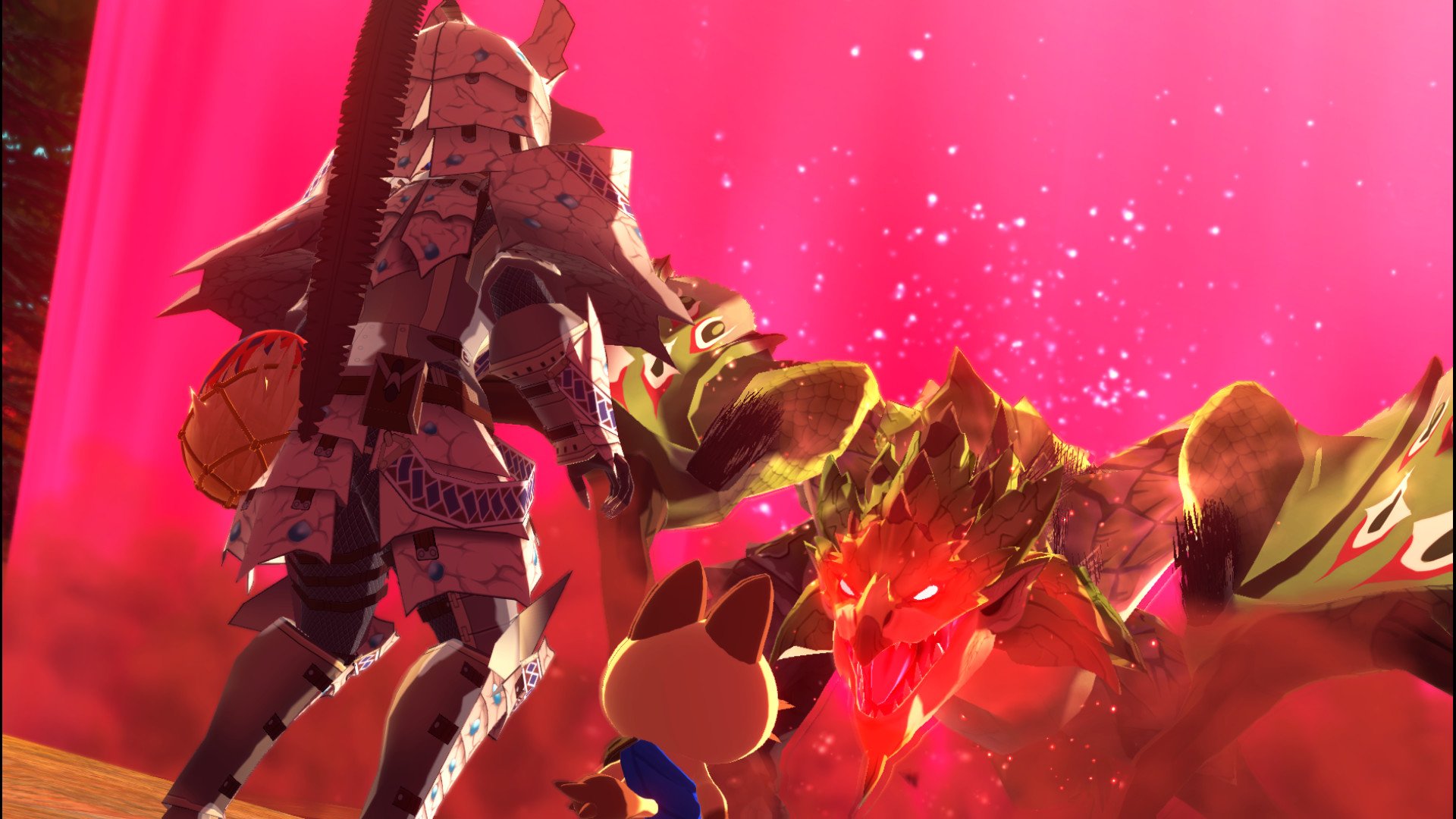
Category | Monster Hunter Stories 2: Wings of Ruin |
|---|---|
Title | Monster Hunter Stories 2: Wings of Ruin |
Developer | Capcom |
Publisher | Capcom |
Genre | JRPG |
Minimum Requirements | Windows 10 64-bit |
Game Size | 28GB |
Play Time | 60+ hours |
Players | Single, two-player Co-Op, four-player PVP |
Platforms | Nintendo Switch, PC |
Launch Price | $60 |
Let's begin our journey with this game's visuals. Monster Hunter Stories 2 features an anime art style like the first game, except it's now much more refined. Characters that once had almost Chibi-style designs look more mature and grown-up to match the story's more serious tone, but their light-hearted, colorful aesthetics remain intact. The execution makes me feel like I was playing an interactive Shonen Jump anime.
The same could be said for the monsters, arguably the main attraction of any Monster Hunter game. When I first saw this game, I wondered how the realistically detailed monsters from Monster Hunter World: Iceborne would look in this game's more anime art style. Luckily, the monsters look great. It trades Monster Hunter World: Iceborne's realistic graphical fidelity and focuses on improving the monster's visual color scheme. Monsters that once had a muted color palette are now more colorful, vibrant, and conveyed little details that I never noticed before.
The environments aren't anything to sniff at either. Your journey across the world will take you to all sorts of detailed locations, such as jungles, forests, deserts, and more. These environments are well-detailed and have gorgeous lighting effects, especially when the sun is setting. Fighting a monster during dusk gave me a very satisfying cinematic atmosphere that made me want to play the game almost entirely during the afternoon, which was possible thanks to this game's manually adjustable day and night cycle.
These visual qualities are enriched on the PC version (via Steam) since it can run the game at 60FPS or higher. I was running this game using an Intel Core i5-9400 CPU and an NVIDIA GeForce RTX 2060 GPU, giving me the ability to run the game at 120FPS. The results were stunning, especially when executing my Monstie's cinematic Kinship Skills that provided copious amounts of explosive spectacle. So, you won't have to worry about tracking down high-end hardware to experience this game's visual flair at its best.
All the latest news, reviews, and guides for Windows and Xbox diehards.
However, there are a couple of minor sticking points in this game's presentation. The first of which is the lack of music during exploration. This game features an extensive soundtrack filled with catchy tunes for towns and intense themes for battles and cutscenes, but no music plays when you are exploring the open areas or dungeons. A small intro song plays when you enter a new area, but it's short-lived, and then ambient noises take over until a battle starts. I understand it is faithful to how the mainline Monster Hunter games handle the music. However, in the main games, you spend most of your time fighting the monster, so there was little dead air. But since this is a JRPG where you will be spending a lot of time outside the main questline, the lack of music can make these moments feel a tad dull.
My second issue is the lack of the Monster Hunter language in the audio options. The Monster Hunter series features an in-universe language that added a lot of charm. Unfortunately, it is sadly absent in Monster Hunter Stories 2. You only have the English or Japanese dubs to choose from.
Monster Hunter Stories 2: Wings of Ruin: Story
Monster Hunter Stories 2: Wings of Ruins takes place in a world filled to the brim with monsters. In order to survive, humanity employs monster hunters to fight them off, collect their body parts, and use them to forge new gear. On the other hand, you are not a monster hunter but rather a monster Rider, which tame monsters and become friends with them using Kinship Stones. These tamed and now friendly monsters are referred to by the Riders as Monsties.
Our story begins one night in Mahuna village. An ominous red light appears across the ocean during a festival, and suddenly a giant flock of wyverns called Rathalos starts flying toward the horizon. This includes Hakolo's protector and your late grandfather's Monstie, Guardian Ratha. As a newly graduated Rider (whose appearance and gender can be customized by the player), you volunteer to help investigate why Guardian Ratha has left the island.
During your search, you encounter a young Wyverian girl named Ena who once knew your grandfather. She says that Rathalos are disappearing worldwide, and these red lights are originating from giant pits that fill monsters with uncontrollable rage. You decide to leave the island with Ena and set off on a journey to save the world from this unnatural disaster.
The plot is your standard Monster Hunter affair — a sudden, unexplained event is upsetting the balance of nature, and you go out to stop it — except this one is on a much bigger scale, the likes of which have not been seen since Monster Hunter 4. Without going into spoiler territory, your journey will pit you against all kinds of obstacles and monsters, each one more deadly and angry than the last.
It's not the most original plot in the world, and some of the plot twists are fairly predictable if you're experienced enough with anime tropes. Even so, it was still a fun ride. The story helped to provide good set-pieces for fun boss fights with some of the series' most beloved monsters. And it became surprisingly intense at times, making me fearful for the characters' safety. Plus, I was motivated to keep going just to see what new crazy monster would block my path next.
If you're a newcomer, you do not need to play the first game to understand the story. While characters from the first Monster Hunter Stories show up, the game provides enough exposition to get new players up to speed on who they are. One feature of this game I really like is that you can replay the cinematic cutscenes to refresh your memory. This is an incredible quality-of-life feature that I wish more JRPGs would include.
Monster Hunter Stories 2: Wings of Ruin: Gameplay
In Monster Hunter Stories 2, you travel the world to complete the main questline while taking on side missions to slay monsters that are giving the locals grief. Then, you hunt down the monster, take its body parts back to town, and use them to forge new gear for your Rider. At the same, you're exploring Monster Dens to look for monster eggs so you can add more Monsties to your party.
Unlike the mainline Monster Hunter games where you hunt monsters in real-time combat, the hunts of Monster Hunter Stories are turn-based. You take turns chopping at the monster with your oversized sword and siccing your Monstie at them. You can have up to six Monsties in your party, but only one can be out at a time. You control the Rider while your Monstie is AI-controlled. However, you can use the energy from your Kinship Stone (represented by the Kinship Gauge) to command your Monstie to perform specific attacks you want them to. But to generate the energy needed, you will need to use healing items or engage monsters in Head-to-Heads, which is similar to rock-paper-scissors, where you attack an enemy targeting you, and both of your attacks collide.
Great improvements make combat accessible yet challenging
For the most part, the gameplay structure of Monster Hunter Stories 2 is similar to what we had in the original. However, vast quality-of-life improvements to the combat system make it more accessible for newcomers while also fixing a couple of issues from the first game.
I felt like a true warrior who stood proudly side-by-side with my Monstie, ready to take on the world together.
The first major change is to the monsters' behavior. Originally, monsters constantly switched which attack type they used in battle and their patterns were hard to predict. In Stories 2, monsters will use only one attack type and switch the attack type when they get enraged or change into a new form. At first, I was worried this made the game too easy because I could abuse Double Attacks to negate every attack. However, once I left Hakalo Island and made it to the mainland, my assumptions about this game being too easy were crushed by the angry jaws of a Tigrex.
I quickly realized that the monsters were made significantly more dangerous in this game to compensate for their more predictable attack patterns. Some monsters can attack twice in a single turn, some can use status effects, and others can even call for reinforcements. By the time I reached the halfway point in the story, monsters even started mixing in non-typed attacks in between regular attacks, forcing you to vary up your gameplay and use things like traps and Kinship Skills. It makes the combat system easier to learn for newcomers, but it's still satisfying to master.
The biggest and greatest change, however, is in your Rider's combat capabilities. The Rider in the first game was a squishy and weak combatant. Their main purpose was to support their Monstie and heal them. But in Monster Hunter Stories 2, not only is your Rider just as powerful (sometimes more so) than your Monsties, but their arsenal of weapons has received tremendous upgrades. In addition to returning weapons, the Rider can now use the Bow and Gunlance in battle. All these weapons have been categorized into three damage types, which can deal extra damage to any monster they're strong against. Not only that but they've been given new moves and gameplay mechanics similar to ones they have in the mainline Monster Hunter games.
Source: Capcom
I loved the improvements made to the Rider's toolkit in Monster Hunter Stories 2. I no longer had to wait until I had access to the Kinship Skill to deal optimal damage. I can now deal just as much damage through my character's power and save up my Kinship Skills if I needed to cancel an enemy's attack that didn't trigger a Head-to-Head. I felt like a true warrior who stood proudly side-by-side with my Monstie, ready to take on the world together.
Another adjustment made to combat is the increased emphasis on breaking a monster's body parts. In Monster Hunter Stories 1, you can target a monster's body parts, but it only applied to boss monsters. In Monster Hunter Stories 2, many regular monsters have body parts to break now, not just bosses. Breaking body parts gives you extra rewards, disables their abilities, and sometimes knocks them down. It's so satisfying to chip away a monster's natural weapons and armor.
The only aspect of combat I didn't like was not being able to control the newly added Battle Buddies. These are purely AI-driven companions who join you during the single-player mode or the co-op quests if you can't find a partner online. Each comes with its own unique abilities and Monsties. For the most part, the Battle Buddies are competent allies during the main questline. However, more often than not, they will use an attack that's guaranteed to lose in a Head-to-Head. I would have preferred it if I had control over the Battle Buddies to coordinate my attacks better with them, especially during some of the harder sidequests that put your knowledge of the combat system's mechanics to the test.
Upgrading Monsties got even better
Source: Windows Central
Speaking of Monsties, let's talk more in-depth about how exactly you get new Monsties and upgrade them. You acquire new Monsties by exploring Monster Dens, or optional cave systems that you must survey until you reach the monster's nest (which may or may not have a monster guarding it). Then, you search the nest for an egg you want depending on its color pattern, how much they smell, and how much they weigh. Once you take it back to town and hatch it, you can put it in your active party, send it out on expeditions, or transfer its abilities to your preferred Monsties using the Rite of Channelling. This gameplay feature hooked me in the original Monster Hunter Stories, and it is just as good and addicting here.
I spent so many hours experimenting with the Rite of Channeling that it made me feel like a Monster Hunter equivalent of Dr. Frankenstein. I came up with all sorts of gene combinations, transforming my Monstie into a completely new being you would never see in a mainline Monster Hunter game. For example, I gave my Anjanath the genes of a Pukei-Pukei so it could breathe a toxic gas that poisoned my enemies. You can also focus on improving a Monstie's natural elemental abilities or turn it into a jack-of-all-trades by giving it multiple attack-type moves so it can win any Head-to-Head. The possibilities are endless.
This system hasn't received any major changes compared to the Rider and combat system. But Monster Hunter Stories 2 does include a couple of minor but very welcome quality-of-life improvements. For starters, Monsties only have one egg pattern associated with them now instead of five, which makes it much easier and less annoying to spot which Monstie you're going to get. There have also been slight changes to the Gene Bingo Chart, which gives Monsties small stat bonuses.
Final thoughts
It took me around 66 hours to complete the main storyline alone while doing only 50% of the sidequests. However, if you take the time to complete all the quests, experiment with the Rite of Channelling, and collect all the Monsties, it will last you dozens more. And that's not even going into the multiplayer aspects of the game where you get to pit your Monsties against your friends in PVP battles or go on co-op quests together. Plus, this game will receive a ton of free title updates over the coming months, which will add more Monsties and new co-op quests to keep you busy long after the credits roll.
After Monster Hunter World: Iceborne had concluded with its final update, I was hungry for another Monster Hunter game that could fill the void left behind. Monster Hunter Stories 2 filled that and then some with its improved combat system, quality-of-life improvements, a vast wealth of content, and most importantly, more awesome monsters you can become best friends with. I hope Monster Hunter Stories 2 makes it onto Xbox Series X and Xbox Series S someday, but until then, the PC version is the best place to play.
If you're a fan of JRPGs, Monster Hunter, or a newcomer looking for a fun adventure where you can fight or befriend monsters, look no further than Monster Hunter Stories 2: Wings of Ruin.

Bottom line: Monster Hunter Stories 2: Wings of Ruin is an incredibly fun ride that is packed with enough single-player and multiplayer content to last you for months on end. I highly recommend it if you're a fan of turn-based JRPGs, Pokémon, or just the Monster Hunter series.

Alexander Cope is a gaming veteran of 30-plus years, primarily covering PC and Xbox games here on Windows Central. Gaming since the 8-bit era, Alexander's expertise revolves around gaming guides and news, with a particular focus on Japanese titles from the likes of Elden Ring to Final Fantasy. Alexander is always on deck to help our readers conquer the industry's most difficult games — when he can pry himself away from Monster Hunter that is!
